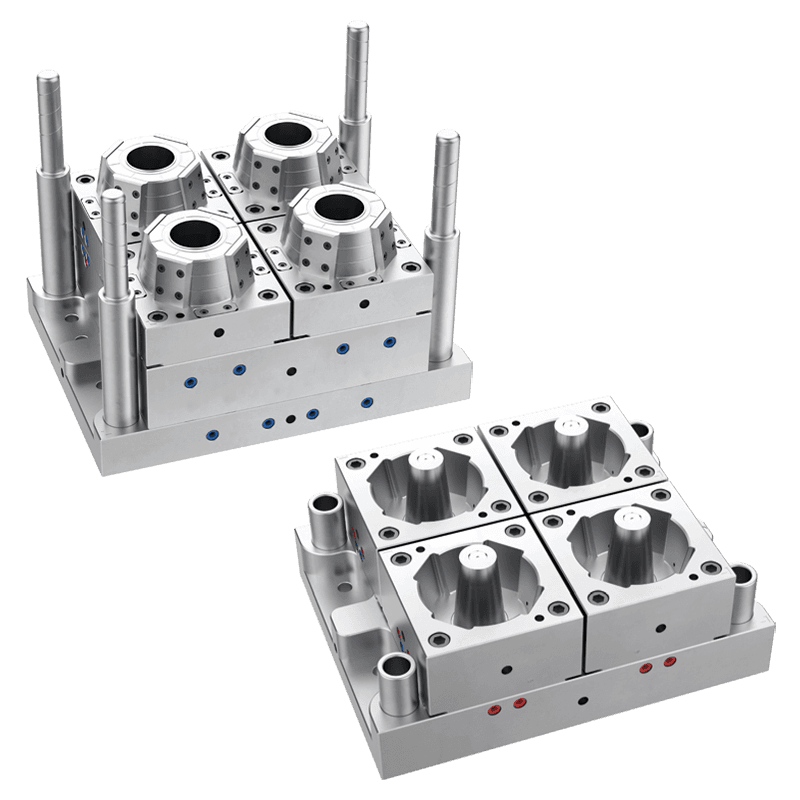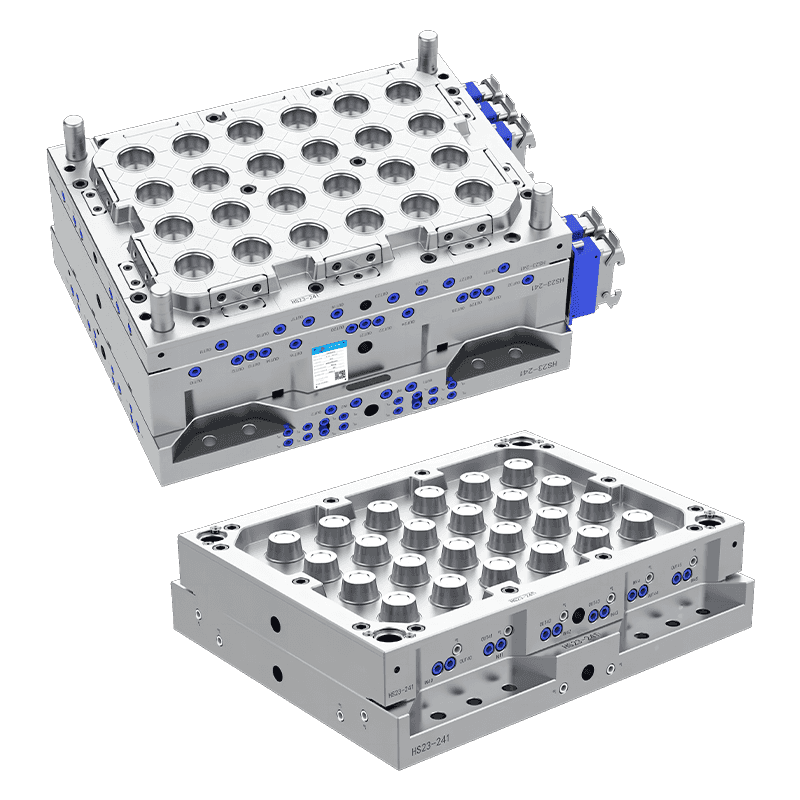How Does the Material of a Mould for Plastic Cup Affect Its Performance?
The material chosen for the mould for plastic cup production has a significant impact on both the manufacturing process and the final quality of the product. Moulds used in plastic injection moulding must be durable, resistant to wear, and capable of maintaining high precision throughout the production process. The choice of material affects various aspects of performance, such as precision, cycle times, cost-efficiency, and durability.

1. Precision and Dimensional Stability
One of the most important factors in plastic cup mould performance is the precision with which the mould produces consistent, high-quality cups. The material of the mould plays a direct role in determining the dimensional accuracy and stability of the final product.
Material Hardness and Surface Finish: Moulds made from high-grade materials like hardened steel (e.g., H13, P20) tend to maintain their dimensions more effectively during long production runs. These materials are capable of withstanding the stress of repeated injection cycles without warping or deforming. The smoothness of the mould’s surface also contributes to the final finish of the plastic cup, which is essential for aesthetics and usability. For plastic cups, a high-quality surface finish is important not only for appearance but also for ease of demoulding and to avoid surface defects like streaks or marks.
Tolerance and Repeatability: The choice of mould material influences how closely the mould can adhere to the required tolerances. Steel and aluminium alloys, for instance, provide higher dimensional stability than softer materials. With repeated use, softer materials may expand or contract more than harder ones, which can variations in the size or shape of the cups. This can result in inconsistencies that affect product quality and higher rejection rates. By choosing a material that holds its shape under stress, manufacturers ensure that the mould can produce plastic cups with uniform dimensions, which is critical for quality control.
Dimensional Stability Over Time: A key aspect of mould performance is the material’s ability to retain its precision over time. Materials like stainless steel or tool steels used in high-quality moulds exhibit dimensional stability and wear resistance compared to lower-quality materials. This means that the mould is more likely to produce consistent cups across extended production cycles, reducing the need for frequent recalibration or replacement.
2. Wear Resistance and Durability
Mould durability is a crucial factor that impacts both the production efficiency and cost-effectiveness of manufacturing plastic cups. The material used to construct the mould must be able to endure the stresses of the injection moulding process over long periods.
Wear Resistance of the Mould Material: During injection moulding, the mould cavity is exposed to high pressures, temperature fluctuations, and friction. Materials like hardened steel (H13 or S7) are chosen for their wear resistance, as they can withstand these harsh conditions without deteriorating. As the mould undergoes numerous injection cycles, the surfaces inside the mould can wear down, surface imperfections, misalignment, or a reduced ability to produce accurate parts. Moulds made from softer materials, such as aluminum, may wear more quickly and premature mould failure.
Cavity Wear and Erosion: The cavity of the mould is especially susceptible to wear due to constant contact with the injected plastic material. In the case of certain types of plastic, like those with high abrasiveness or additives (e.g., glass-filled polymers), the wear on the mould cavity can be more severe. Mould materials that are harder and more resistant to erosion, such as carbide-infused steels or high-strength tool steels, are better suited for these types of conditions, ensuring longer operational lifespans and reduced maintenance costs.
Fatigue Resistance: Over time, the mould may experience thermal cycling (heating and cooling), which can material fatigue, cracking, or distortion. Materials with higher resistance to thermal fatigue, such as certain stainless steel alloys, can withstand these changes without deteriorating, ensuring that the mould remains functional for extended periods.
3. Thermal Management and Heat Resistance
The plastic injection moulding process involves rapid heating and cooling cycles, which makes effective thermal management a critical factor for the performance of the mould. The material used for the mould affects how well it can handle temperature fluctuations without compromising its structural integrity or the quality of the plastic cups.
Heat Transfer Efficiency: Different mould materials exhibit varying levels of thermal conductivity. For example, steel materials have relatively low thermal conductivity, meaning they can retain heat for longer periods and require more time to cool. This can result in longer cycle times but can also be beneficial for certain types of plastics that require slower cooling rates for finish. On the other hand, materials like aluminum have higher thermal conductivity, which can allow for faster cooling and shorter cycle times. However, they may also be more prone to dimensional changes due to rapid temperature shifts, making them less ideal for high-precision applications.
Thermal Expansion and Stress: Moulds made from materials with a low coefficient of thermal expansion (such as certain grades of stainless steel or tool steel) will experience minimal dimensional change as they heat and cool. This helps maintain the accuracy and consistency of the mould throughout the production process. Moulds made from materials with higher thermal expansion rates may be more prone to warping or shifting, especially if there are significant temperature fluctuations, which could defects in the plastic cups, such as deformed walls or inconsistent thickness.
Heat Resistance Under High Temperatures: The injection moulding process often requires the mould to withstand very high temperatures, particularly when working with heat-resistant plastics. Materials like H13 steel, which is capable of withstanding temperatures up to 500°C (932°F), are often used in moulds for producing plastic cups that require such conditions. Moulds made from materials with lower heat resistance may degrade over time under these conditions, affecting both the production efficiency and the quality of the product.
Contact Us
Email: [email protected]; Or fill out the contact form below.

 English
English 中文简体
中文简体 русский
русский Español
Español Français
Français




